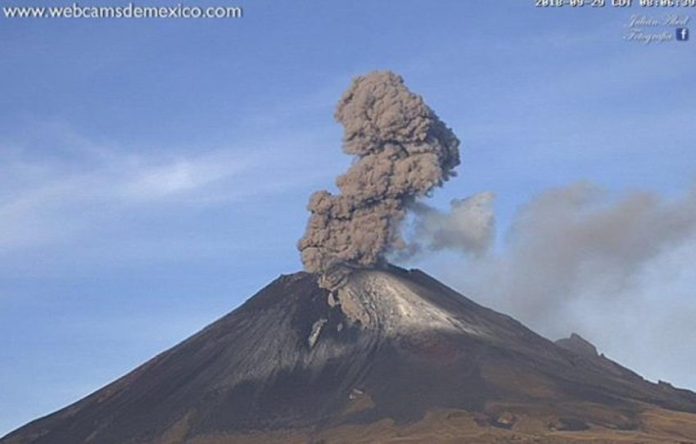Activity at El Popo is continuing to increase as a result of the September 19, 2017 earthquake, whose epicenter was close to the active volcano located in central Mexico.
Ana Lillian Martín del Pozzo, an academic at the National Autonomous University’s Institute of Geophysics, said in a press release that the activity currently being recorded is the greatest since Don Goyo, as the volcano is known colloquially, “woke up” in 1994 after remaining dormant for 70 years.
“The Popocatépetl Volcano is showing a lot of activity and it’s on the rise. A sign of that is the increase in exhalations and volcano tectonic earthquakes, the latter in an order of magnitude greater than that seen in the last 24 years,” she said.
Ramón Espinasa Pereña, a deputy director of volcanic risks at the National Disaster Prevention Center (Cenapred), said that “within months, a year, or the day after tomorrow” there could be even greater activity than that observed to date.
Martín said that a spike in activity at El Popo has been recorded over the past month and reached a peak on September 20 although there was another significant emission yesterday.
The volcanologist said that a group of geologists collected ash samples last Sunday that will be analyzed to help determine exactly what is happening inside Don Goyo.
“. . . This volcanic activity is different from that presented in other periods. These explosions indicate that the volcano is changing, magma is adjusting, and now we know that due to these small explosions, magma has risen . . .” Martín said.
Espinasa said the increased activity at El Popo was inevitable but added that last September’s earthquake had probably caused it to come on more quickly.
The day after the 7.1-magnitude quake there were 286 volcanic exhalations from Popocatépetl, the highest number ever recorded in a single day, although daily emissions had begun increasing long before the temblor struck.
The good news is that it is possible to predict an imminent large eruption of El Popo via a monitoring network consisting of six stations located within the volcano. The Institute of Geophysics will place a further four stations deeper inside its crater in the coming weeks.
Nevertheless, Martín warned people living within the vicinity of El Popo to be alert to the dangers posed by increased volcanic activity and to act in accordance with instructions from specialized authorities such as Cenapred.
A yellow, phase 2 alert is currently in place for the volcano, meaning that the release of water vapor and gas plumes is to be expected.
Source: El Universal (sp)
